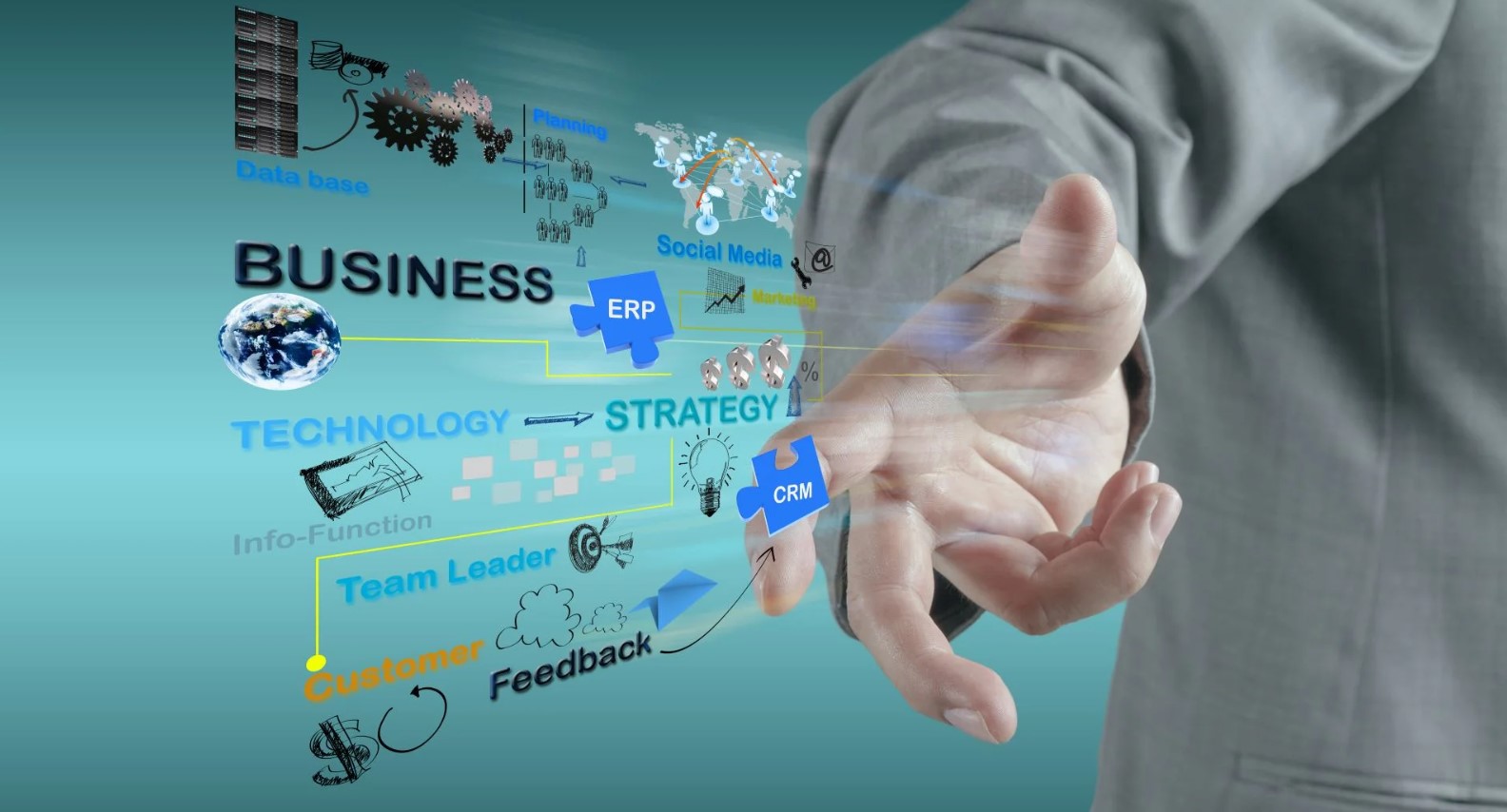Cutting-edge service marketing tactics are constantly evolving as businesses look for innovative ways to attract and retain customers. From leveraging social media platforms to utilizing AI technology, companies are always on the lookout for new strategies to stand out in a crowded marketplace. One tactic that has gained popularity in recent years is influencer marketing, where businesses partner with popular social media personalities to promote their products or services.
This allows companies to reach a wider audience and tap into the influencer’s loyal fan base. Another effective tactic is personalized marketing, where companies use data and analytics to tailor their messaging and offerings to individual customers. This creates a more personalized experience for the consumer and can lead to increased customer loyalty and satisfaction. Additionally, businesses are increasingly using virtual reality and augmented reality technologies to create immersive and interactive experiences for customers. These cutting-edge tactics are helping businesses stay ahead of the competition and connect with customers in new and exciting ways.

Deciphering Service Marketing
Deciphering service marketing involves understanding the various strategies and tactics that businesses use to promote and sell their services to customers. This can include everything from creating a strong brand image to developing targeted advertising campaigns. Service marketing is all about communicating the value of a service to potential customers and convincing them to choose a particular provider over the competition. This can be done through a variety of channels, such as social media, email marketing, and traditional advertising. Successful service marketing requires a deep understanding of consumer behavior and preferences, as well as the ability to adapt to changing market trends and technologies.
One key aspect of deciphering service marketing is identifying the unique selling points of a particular service and effectively communicating them to the target audience. This can involve highlighting the benefits of the service, such as convenience, affordability, or quality, and explaining how it can meet the needs and solve the problems of potential customers. Service marketing also involves building strong relationships with customers and providing excellent customer service to ensure that they are satisfied with their experience.
Another important aspect of service marketing is measuring the effectiveness of marketing campaigns and making adjustments as needed. This can involve tracking key performance indicators, such as customer acquisition costs, conversion rates, and customer retention rates, to determine the return on investment of marketing efforts. By analyzing this data, businesses can identify which strategies are working and which are not, and make changes to improve their marketing efforts.
Overall, deciphering service marketing is a complex and dynamic process that requires a deep understanding of consumer behavior, market trends, and effective communication strategies. By developing a strong marketing plan and continually evaluating and adjusting their efforts, businesses can successfully promote and sell their services to customers in a competitive market.
Unveiling Service Marketing’s Significance
Service marketing is a critical component of any business strategy, as it is what sets apart one company from another in the eyes of consumers. By effectively promoting and showcasing the unique benefits and value propositions of a service, businesses can attract and retain customers, ultimately driving growth and success. Service marketing encompasses a wide range of activities, including advertising, promotions, branding, and customer relationship management. It involves understanding the needs and preferences of target audiences, developing compelling messaging and positioning, and delivering exceptional customer experiences. In today’s competitive marketplace, where products and services are increasingly commoditized, service marketing plays a vital role in creating differentiation and building brand loyalty.
One of the key aspects of service marketing is the emphasis on building relationships with customers. Unlike tangible products, services are intangible and experiential in nature, making it crucial for businesses to establish trust and credibility with their target audience. By focusing on delivering exceptional service quality and personalized experiences, companies can cultivate long-term relationships with customers, leading to repeat business and referrals. Additionally, service marketing allows businesses to leverage word-of-mouth and social media to amplify their reach and influence, effectively turning satisfied customers into brand advocates.
Furthermore, service marketing is essential for driving revenue and profitability. By effectively communicating the value and benefits of a service, businesses can justify premium pricing and capture a larger share of the market. Additionally, service marketing enables companies to identify new opportunities for upselling and cross-selling, as well as creating innovative service offerings that meet evolving customer needs. Ultimately, by investing in service marketing, businesses can position themselves as industry leaders and drive sustainable growth in an increasingly competitive landscape.
In conclusion, the significance of service marketing cannot be overstated in today’s business environment. It is a powerful tool for differentiating a company from its competitors, building customer relationships, and driving revenue and profitability. By prioritizing service marketing as a core component of their overall strategy, businesses can create lasting value for both customers and shareholders, ultimately leading to long-term success and sustainability.

Unraveling Service Marketing Traits
Service marketing traits are essential for businesses to understand in order to effectively promote and sell their services to consumers. These traits encompass a variety of elements that contribute to the overall success of a service marketing strategy. One key trait is the ability to effectively communicate the value of the service to the target audience. This involves clearly articulating the benefits and advantages of the service in a way that resonates with potential customers.
Another important trait is building trust and credibility with consumers. This can be achieved through transparent and honest communication, as well as delivering on promises and providing excellent customer service. Additionally, understanding the needs and preferences of the target market is crucial for designing and promoting services that will meet their specific requirements. Finally, adaptability and innovation are also important traits in service marketing, as businesses must be able to respond to changing market trends and consumer demands in order to stay ahead of the competition. By unraveling these service marketing traits, businesses can develop effective strategies that will attract and retain customers, ultimately leading to long-term success and growth.
Diverse Strategies in Service Marketing
In service marketing, there are a variety of strategies that businesses can employ to attract customers and build brand loyalty. One approach is to focus on personalization, tailoring services to meet the specific needs and preferences of individual customers. This can involve offering customized packages or options, providing personalized recommendations, or creating a unique customer experience. Another strategy is to emphasize the quality and reliability of the service being offered.
By highlighting the benefits and advantages of the service, businesses can build trust with customers and differentiate themselves from competitors. Additionally, businesses can use emotional appeals in their marketing efforts, connecting with customers on a deeper level and establishing a strong emotional connection. This can involve storytelling, creating memorable experiences, or tapping into customers’ emotions and values. Another approach is to leverage technology and innovation in service marketing, using digital tools and platforms to reach customers, streamline processes, and enhance the overall customer experience.
By embracing new technologies and staying ahead of the curve, businesses can attract tech-savvy customers and demonstrate their commitment to innovation. Overall, a diverse range of strategies can be used in service marketing to attract customers, build brand loyalty, and drive business growth. By combining personalization, quality, emotional appeal, and technology, businesses can create a compelling value proposition that resonates with customers and sets them apart from competitors.
1. Referral Boost
Referral boost is a practice that involves incentivizing existing customers to refer new customers to a business in exchange for rewards or benefits. This strategy is often used by companies looking to expand their customer base quickly and cost-effectively. By encouraging satisfied customers to spread the word about their positive experiences, businesses can tap into a valuable source of new leads. Referral boost programs can take many different forms, from offering discounts or freebies to both the referrer and the referee, to providing exclusive access to special events or products.
When implemented successfully, referral boost can be a powerful tool for driving growth and increasing brand loyalty. However, it is important for businesses to carefully consider the potential risks and ethical implications of such programs. While referral boost can be an effective marketing strategy, businesses must ensure that they are not engaging in deceptive or manipulative practices that could harm their reputation or violate consumer trust. Ultimately, the success of a referral boost program hinges on transparency, authenticity, and a genuine commitment to delivering value to both existing and new customers. By approaching referral boost with integrity and accountability, businesses can harness the power of word-of-mouth marketing to drive sustainable growth and build lasting relationships with their customers.
2. Educating Customers
Educating customers is essential for businesses to ensure that their products and services are used correctly and safely. By providing clear and concise information to customers, companies can help prevent misuse and potential harm. This can be done through product demonstrations, user manuals, and online tutorials. Educating customers also helps build trust and loyalty, as customers are more likely to return to a company that values their well-being and provides them with the information they need to make informed decisions. Additionally, educating customers can lead to increased customer satisfaction and reduced returns or complaints. Overall, investing in customer education is a smart business strategy that can benefit both the company and its customers in the long run. By taking the time to educate customers, businesses can create a more knowledgeable and responsible consumer base, leading to a more successful and sustainable business model.

3. Social Media Buzz
Social media buzz is a phenomenon that has taken the world by storm in recent years. With the rise of platforms like Instagram, Twitter, and TikTok, people have more ways than ever to share their thoughts, opinions, and experiences with a global audience. This constant stream of information has created a virtual ecosystem where trends can quickly catch fire and spread like wildfire. From viral challenges to controversial debates, social media buzz has the power to shape public perception and influence popular culture.
However, this rapid dissemination of information can also have negative consequences, such as the spread of misinformation or the amplification of harmful stereotypes. Despite these potential drawbacks, social media buzz shows no signs of slowing down, as people continue to seek validation, connection, and entertainment through their online interactions. As technology continues to evolve, it will be interesting to see how social media buzz evolves along with it, shaping the way we communicate and engage with the world around us. Love it or hate it, social media buzz is here to stay, and its impact on society will only continue to grow in the years to come.
4. Effective Demonstrations
Effective demonstrations are a powerful tool for making a point or advocating for change. A successful demonstration can attract attention and create a sense of urgency around an issue. It is important to carefully plan and execute a demonstration in order to maximize its impact. This includes choosing a strategic location, creating eye-catching signs and banners, and engaging with the media to ensure that the message reaches a wide audience. Demonstrations can take many forms, from peaceful marches and rallies to more creative and disruptive actions. Whatever form they take, demonstrations should be organized in a way that is safe for participants and respectful of others.
By harnessing the power of collective action, effective demonstrations can raise awareness, build solidarity, and ultimately bring about meaningful change. In a society where voices are often marginalized or ignored, demonstrations provide a platform for people to come together and have their voices heard. When done well, demonstrations can be a powerful tool for challenging the status quo and pushing for a more just and equitable world.
Decoding Product vs. Service Marketing
Product marketing and service marketing are two distinct approaches to promoting and selling goods and services. Product marketing focuses on highlighting the features and benefits of a physical product, such as a smartphone or a car. This type of marketing emphasizes the tangible aspects of the product, such as its design, performance, and durability. On the other hand, service marketing revolves around promoting intangible offerings, such as consulting services or insurance plans. Service marketing focuses on showcasing the expertise, reliability, and convenience of the service provider.
Decoding the differences between product and service marketing is crucial for businesses to effectively promote their offerings and attract customers. Understanding the unique challenges and strategies associated with each type of marketing can help businesses tailor their messaging and tactics to better reach their target audience. By recognizing the distinct features and benefits of products and services, businesses can develop more targeted and impactful marketing campaigns that resonate with potential customers. Ultimately, the key to successful marketing lies in understanding the nuances of product and service marketing and leveraging this knowledge to create compelling and persuasive messaging that drives sales and builds brand loyalty.
Expert Service Marketing Insights
Expert service marketing insights provide valuable knowledge and strategies for businesses to effectively promote their services to target audiences. These insights are derived from years of experience and expertise in the field of marketing, allowing professionals to understand consumer behavior, market trends, and industry best practices. By utilizing these insights, businesses can create targeted marketing campaigns that resonate with their target audience and drive results. Expert service marketing insights also help businesses to stay ahead of the competition by identifying new opportunities for growth and innovation. Additionally, these insights can help businesses to optimize their marketing efforts by focusing on the most effective channels and messaging strategies. Overall, expert service marketing insights play a crucial role in helping businesses to achieve their marketing goals and connect with their customers in a meaningful way.
1. Building Trust
Building trust is essential in any relationship, whether it be in a personal or professional setting. Trust forms the foundation of all interactions and allows for open communication and collaboration. Without trust, relationships can quickly deteriorate and lead to misunderstandings, conflicts, and resentment. Building trust takes time and effort, as it requires consistent and reliable behavior over an extended period of time.
Trust is earned through honesty, integrity, and transparency in all interactions. It is also important to follow through on commitments and be accountable for one’s actions. Building trust involves listening to others, showing empathy, and being consistent in one’s words and actions. Trust is fragile and can easily be broken, so it is important to always be mindful of how one’s behavior and decisions impact others. Trust is a two-way street, requiring both parties to be trustworthy and trusting in order to create a strong and lasting bond.
Ultimately, building trust is crucial for fostering strong relationships, whether it be with friends, family, colleagues, or clients. Trust allows for a sense of security and reliability in relationships, leading to increased cooperation, mutual respect, and overall satisfaction. By prioritizing trust in all interactions, individuals can create a positive and supportive environment where everyone feels valued and respected.
2. Customer Testimonials
Customer testimonials are an essential tool for businesses to build trust with potential customers. These testimonials provide real-life experiences and feedback from previous customers, giving new customers insight into the quality of products or services offered. By showcasing positive testimonials on their website or marketing materials, businesses can demonstrate their credibility and reliability.
Customers are more likely to trust the opinions of their peers than traditional advertising, making testimonials a powerful marketing tool. Additionally, testimonials can help businesses identify areas for improvement and provide valuable feedback for future product development. By encouraging satisfied customers to share their experiences, businesses can strengthen their reputation and attract new customers. Overall, customer testimonials play a crucial role in building trust, increasing sales, and fostering strong relationships with customers. Businesses should prioritize collecting and showcasing testimonials to enhance their credibility and reputation in the market.

3. Showcase Certificates
Showcase certificates are a valuable tool for individuals to highlight their skills, achievements, and qualifications in a professional setting. These certificates serve as a tangible representation of one’s dedication and commitment to their field of expertise. By displaying showcase certificates, individuals can effectively demonstrate their level of competency and expertise to potential employers, clients, or colleagues. Additionally, showcase certificates can help individuals stand out in a competitive job market, as they provide concrete evidence of their abilities and accomplishments.
Whether it’s a certificate in a specialized skill, a certification for completing a training program, or an award for outstanding performance, showcase certificates serve as a badge of honor that can boost one’s credibility and reputation. In today’s digital age, showcase certificates can also be shared online through professional networking platforms, further enhancing an individual’s online presence and visibility. Overall, showcase certificates are a powerful tool for individuals to showcase their skills and accomplishments, ultimately helping them to advance their careers and achieve their professional goals.
4. Streamlined Processes
Streamlined processes are essential for any organization looking to improve efficiency and productivity. By eliminating unnecessary steps and focusing on the most critical tasks, businesses can save time and resources. Streamlining processes also helps to reduce errors and improve overall quality, as employees can work more effectively when they have clear and simplified procedures to follow. Additionally, streamlined processes can lead to faster decision-making and improved customer satisfaction, as products and services are delivered more quickly and with fewer complications.
In today’s fast-paced business environment, organizations that fail to streamline their processes risk falling behind competitors who are able to adapt and innovate more efficiently. By continuously evaluating and refining their processes, companies can stay agile and responsive to the changing demands of their customers and the market. Ultimately, streamlining processes is not only about cutting costs or increasing profits, but also about creating a more effective and sustainable business model that can thrive in the long term.

5. Seamless Communication Strategies
Effective communication is crucial in any organization, as it ensures that all team members are on the same page and working towards a common goal. Seamless communication strategies are essential in achieving this goal. These strategies involve clear and concise messaging, utilizing various communication channels, such as email, phone calls, and in-person meetings, to ensure that information is disseminated quickly and accurately.
Additionally, having a designated communication plan in place helps to streamline the flow of information and prevent any misunderstandings or miscommunications. By implementing seamless communication strategies, organizations can increase productivity, foster collaboration, and ultimately achieve success. It is important for leaders to prioritize communication within their teams and create an environment where open and transparent communication is encouraged.
This not only helps to build trust among team members but also ensures that everyone is informed and engaged in the decision-making process. In today’s fast-paced and ever-changing business world, the ability to communicate effectively is a valuable skill that can set organizations apart from their competitors. By investing in seamless communication strategies, organizations can create a more cohesive and efficient work environment that leads to greater success and growth.
